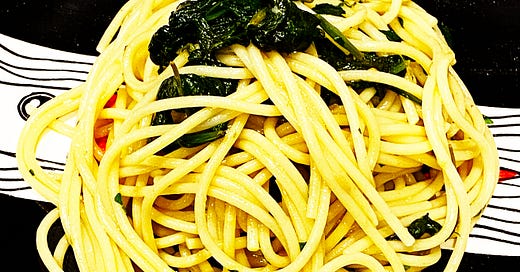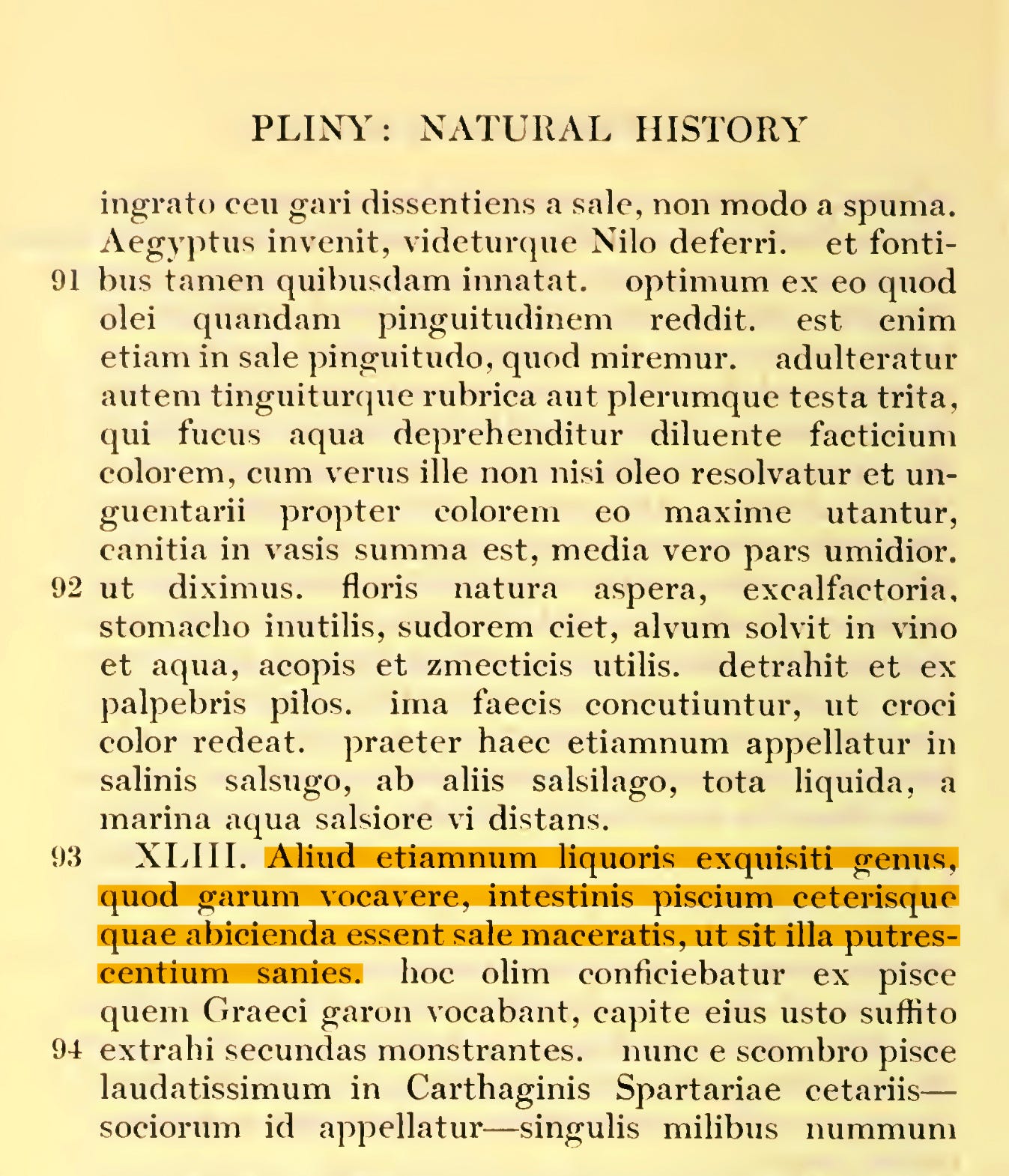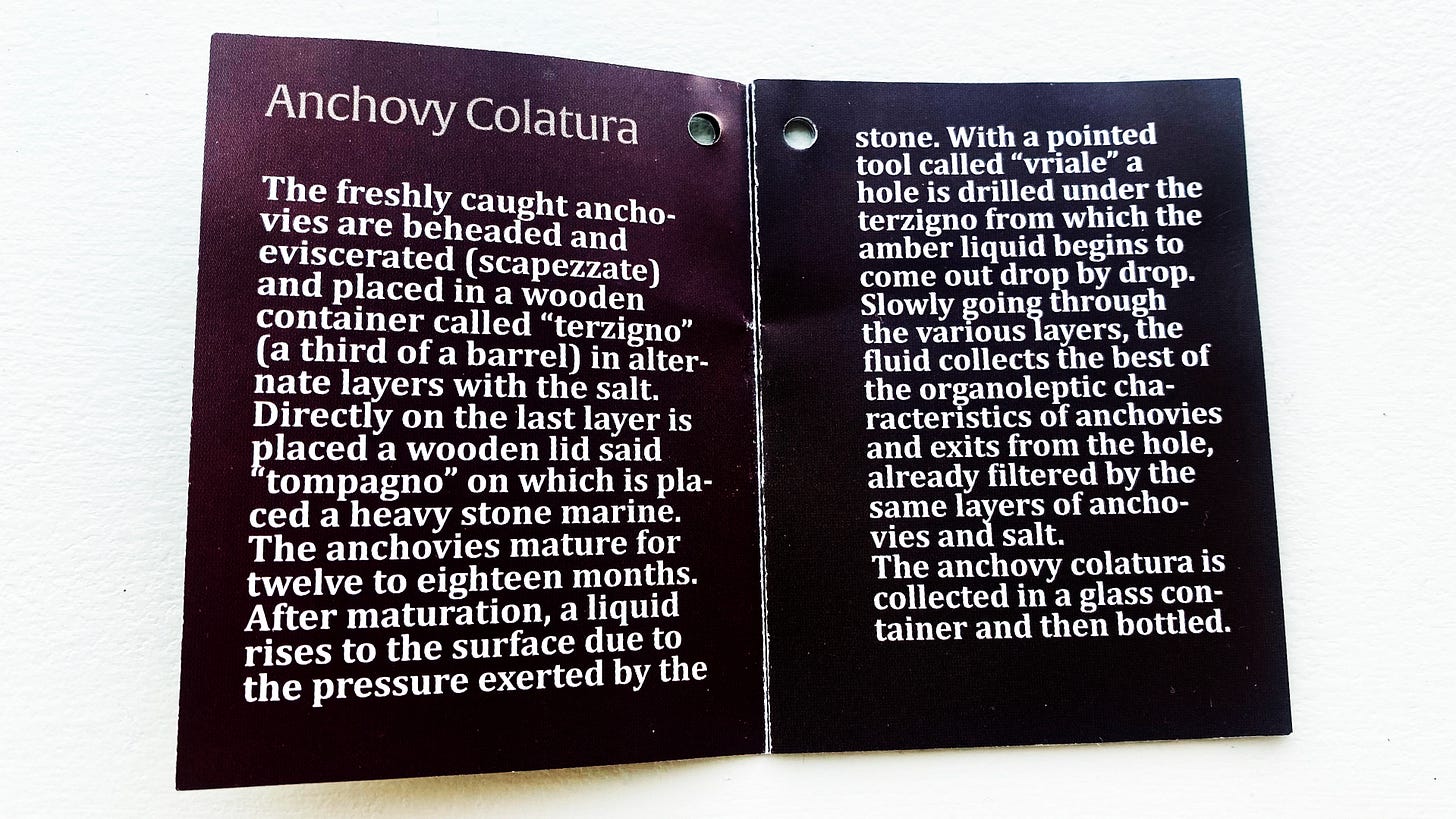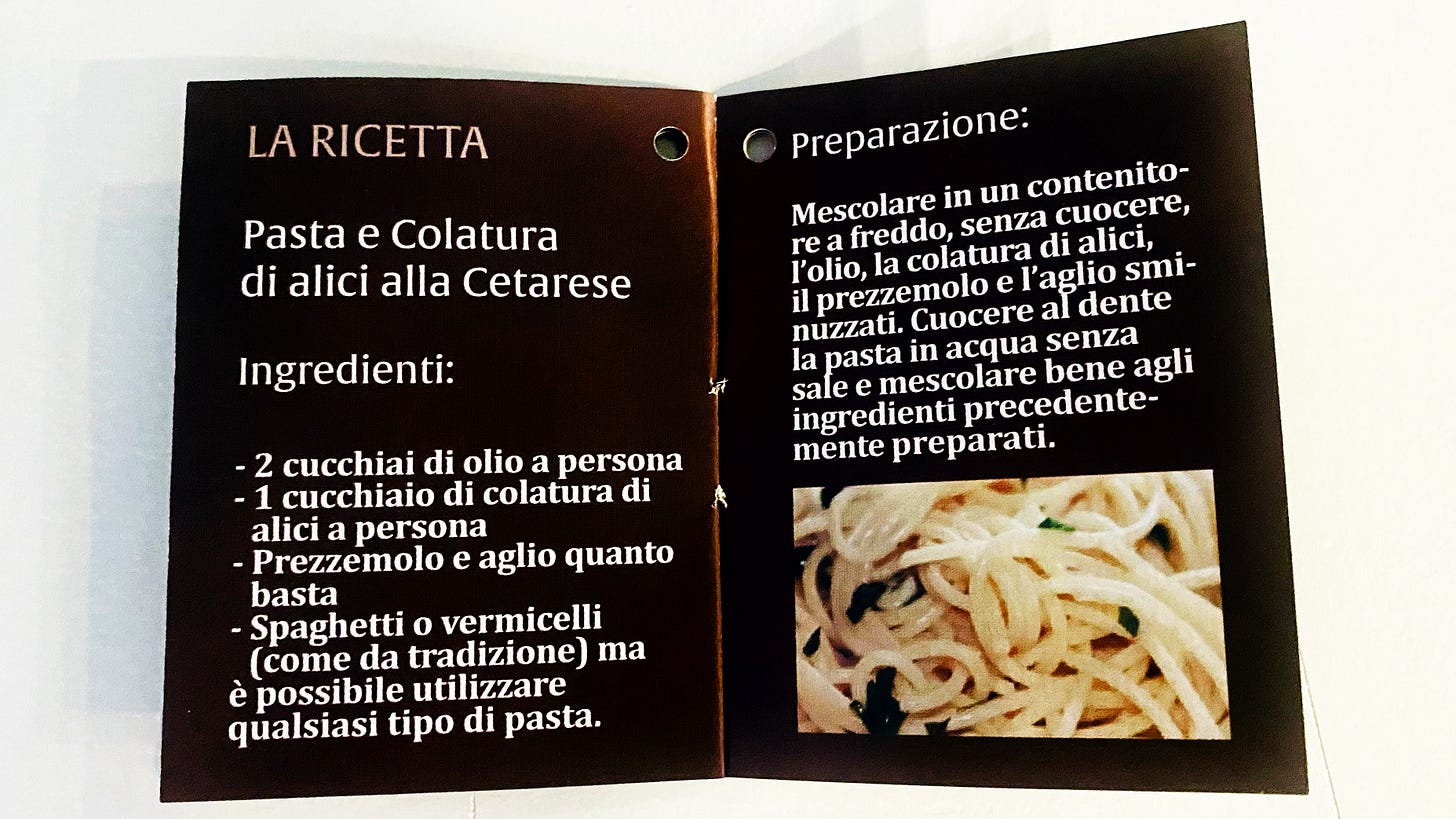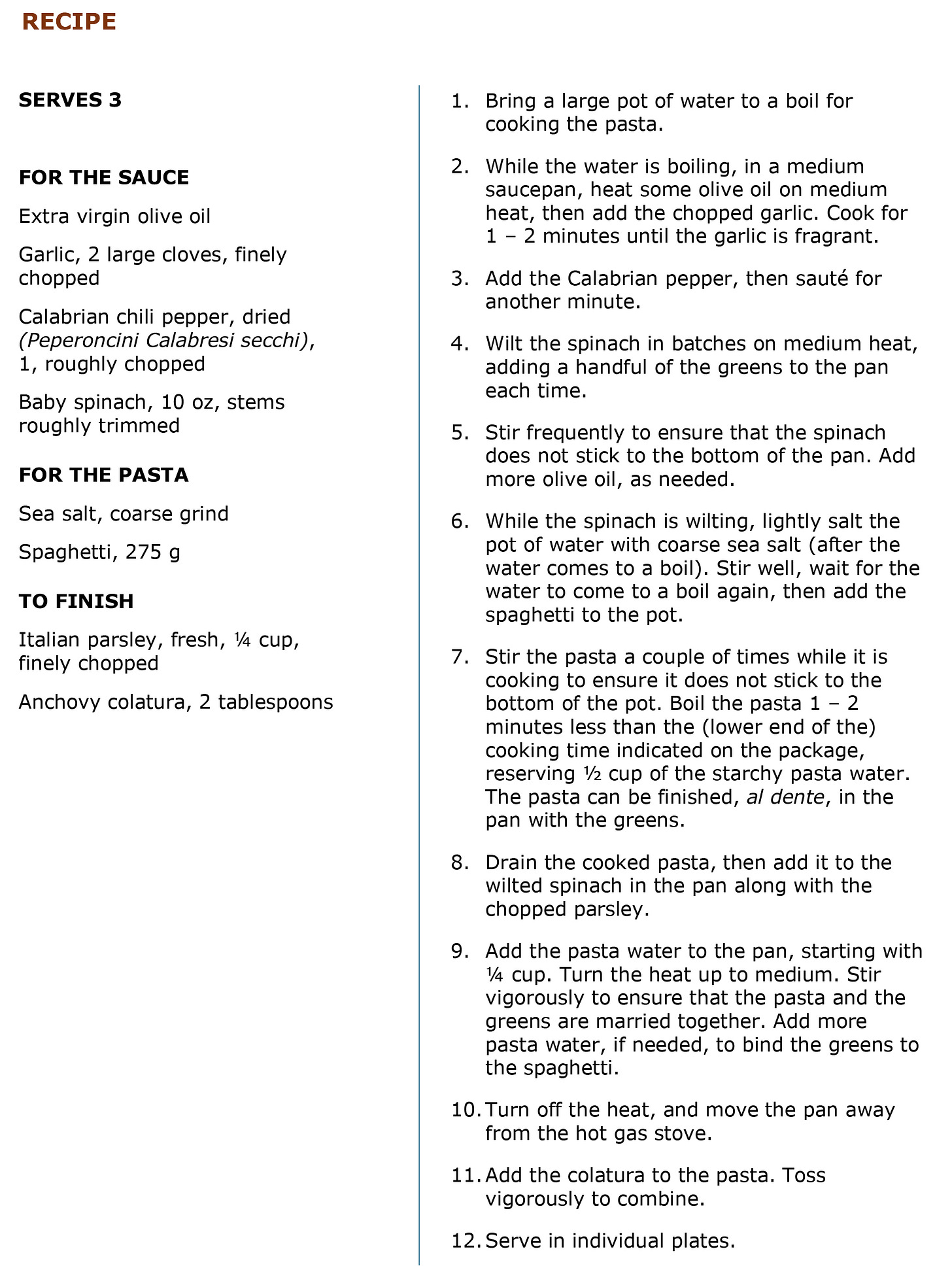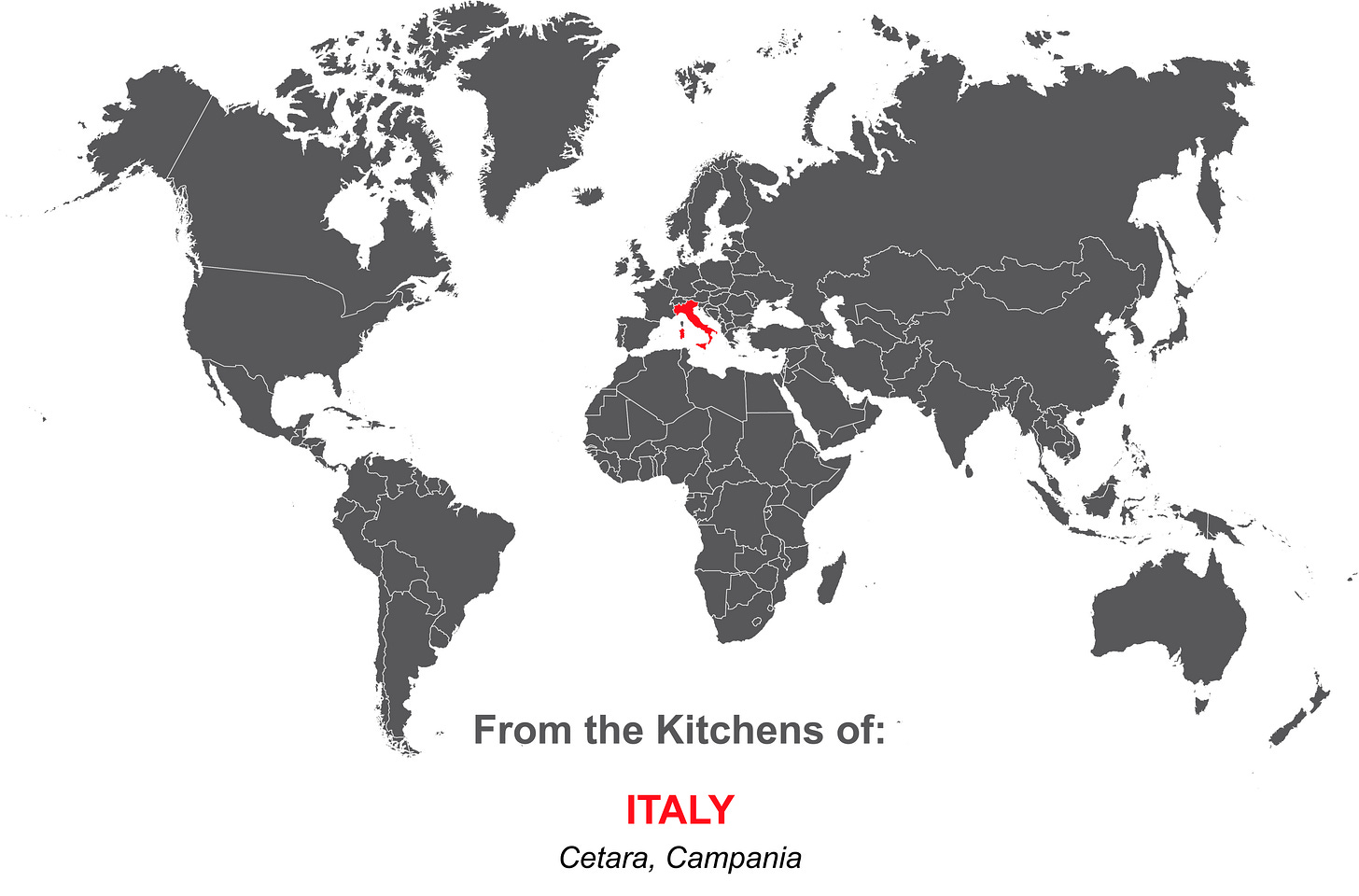Spaghetti with Colatura and Greens
A minimalist pasta dish of garlicky greens, elevated with colatura di alici—an umami-rich fermented anchovy sauce from Cetara, a picturesque fishing village on Italy’s Amalfi Coast.
Discover the full range of stories and recipes in the Culinary Index, and explore lesser-known ingredients in the Ingredient Spotlights—both now featured on Savor the Story homepage.
From Ancient Rome to your table: The magic of fermented fish sauce
The excesses of Ancient Rome are well documented. Not surprisingly, hedonism flourished in the empire, and exotic foods were highly sought after. While it is easy to visualize olive oil, bread and wine as being integral elements of the Roman diet, imported spices and game meat were also routinely consumed by the upper class. Banquets and feasts were commonplace. The Roman elite ate extremely well! Some of the more extravagant and exotic foods included dormice, peacock, flamingo, ostrich and sea urchin. And to season all the food was garum, a fermented fish sauce. It was one of the most prized, and essential, condiments used in the Ancient Roman kitchen and was particularly revered for its rich umami flavor.
Pliny the Elder, in his Latin work Natural History (Book 31, Chapter 43), described garum as follows:
“There is yet another kind of choice liquor, called garum, consisting of the guts of fish and the other parts that would otherwise be considered refuse; these are soaked in salt, so that garum is really liquor from the putrefaction of these matters.”
Pliny’s description emphasizes both the method of production and the high value placed on garum in Ancient Roman society, making it clear that, despite its humble ingredients, garum was a treasured condiment in the empire.
Small fish, such as mackerel, anchovies and sardines, were typically used to produce garum. The fish parts were layered with salt and left to ferment in the sun for several months, allowing natural enzymes to break down the fish into a rich liquid. The degradation was key to the resultant flavor. The fermentation process broke down fish proteins into amino acids, such as glutamate, giving garum the robust umami flavor for which it was cherished. While garum was widely used across all classes in the Roman society, the wealthy had access to the most expensive and refined versions, often made from rare fish and aged for longer periods. The highest quality garum, called garum sociorum, was exceptionally expensive and considered a luxury item, highlighting the cultural significance of this condiment in Ancient Rome.
Fast forward to modern times: Colatura di alici, a golden-brown liquid made from fermented anchovies, which is still produced on the Amalfi Coast in Italy—primarily in Cetara, a beautiful seaside village—is considered a direct heir of garum. More formally known as colatura tradizionale di alici di Cetara, or traditional anchovy colatura of Cetara, this fermented fish sauce is made from just two ingredients: anchovies and salt. Nettuno, a producer of high-quality colatura, provides the following description of its process.
While colatura in its modern form has been produced for about 1,000 years, its roots extend back over 2,000 years to garum and the Roman Empire, making it one of the oldest culinary traditions to have survived into contemporary cuisine.
One of the gastronomic highlights of the Amalfi Coast is pasta e colatura di alici alla Cetarese, translated as pasta and anchovy colatura cooked in the Cetarese way. The traditional recipe involves making a (cold) vinaigrette by whisking together extra virgin olive oil, anchovy colatura, parsley and garlic with some starchy pasta water to create a creamy emulsion, then mixing in the spaghetti, which is cooked al dente and without salt. The no-cook sauce is chosen to prevent heat from degrading the flavor of colatura.
Colatura also pairs well with a variety of leafy and bitter greens. To make the traditional pasta a more substantial meal, my recipe adds greens to it. After trying a few different greens (spinach, kale, rapini and, even, sea beans), I settled on spinach for its relatively neutral flavor, which lets the colatura take center stage.
Enjoy this umami-rich ingredient, passed down by Ancient Romans, both with greens and the traditional way!
COOKING NOTES
On Peperoncini Calabresi Secchi: Dried Calabrian chili pepper can be found in Italian or other specialty food stores. It can also be substituted by another mild-flavored pepper.
On Anchovy Colatura: It can be found in Italian or other specialty food stores. Look for “Colatura Tradizionale di Alici di Cetara” in the label. Cetara is the hotspot for colatura production, and Nettuno is one of its most esteemed producers. Make sure that water is not on the list of ingredients, which should only include anchovies and salt.
On Spaghetti: If you are new to the pasta world, and don’t have a favorite brand yet (and do not want to make the pasta from scratch), I would recommend Rustichella d’Abruzzo.

